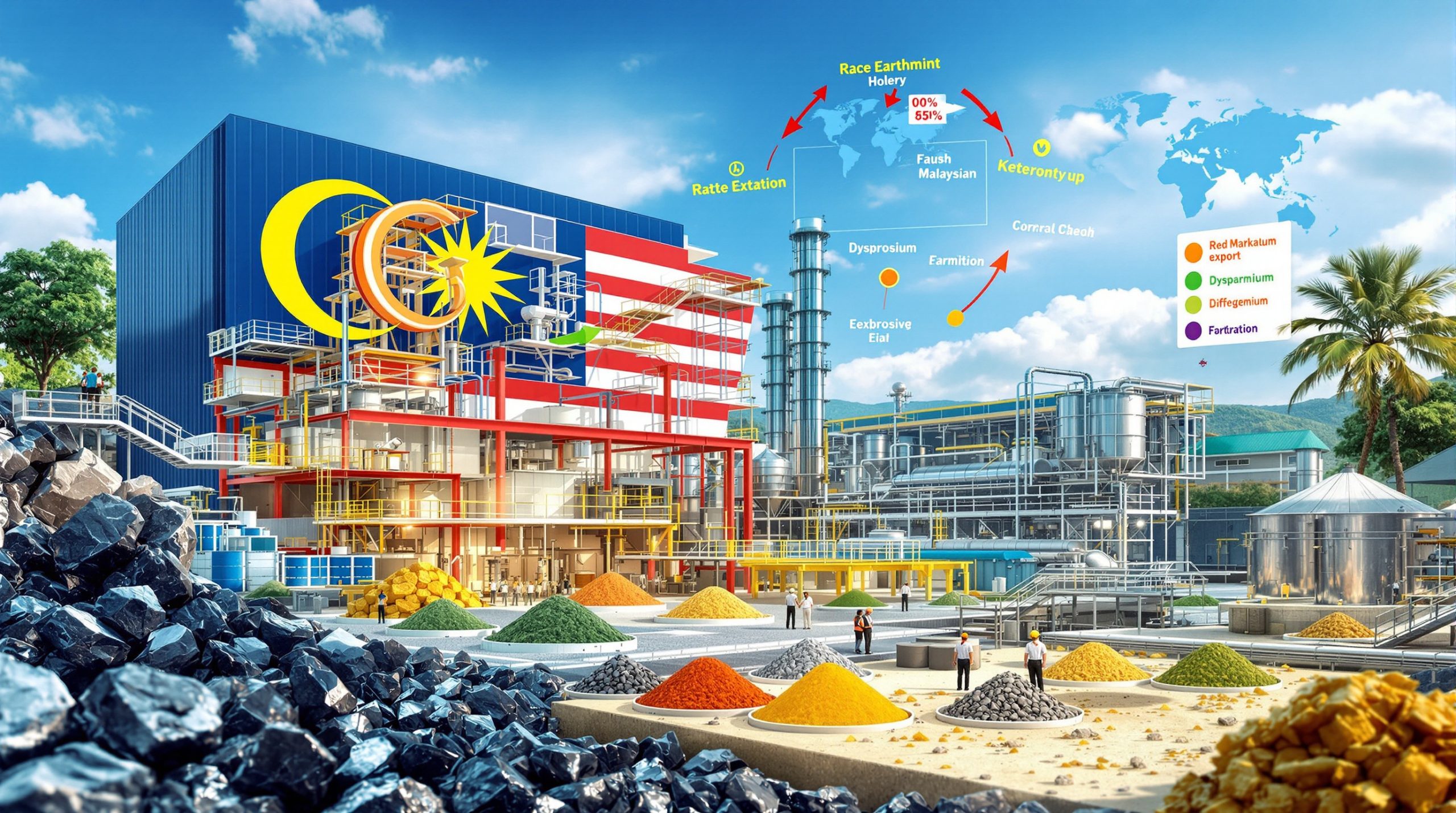Recent Iron Ore Price Gains: What's Driving the Market Rally?
Iron ore markets have demonstrated remarkable resilience in recent weeks, surprising many analysts who had predicted extended price weakness. With complex dynamics at play across global supply chains and regional markets, understanding the factors behind these iron ore price trends becomes essential for investors, industry professionals, and market observers.
How Are Iron Ore Prices Performing in the Current Market?
Iron ore has experienced a significant price rally recently, defying earlier bearish predictions and showcasing the market's continued volatility. This upward momentum comes despite initial concerns about potential policy headwinds.
The market initially weakened due to anticipated tariff policies, causing futures prices to dip slightly. However, sentiment rebounded strongly following the postponement of tariff implementation, triggering a notable rally in iron ore futures markets across trading hubs.
"Market sentiment weakened initially due to tariff policy expectations but recovered after tariff implementation was postponed, driving a notable rally." — SMM Analysis, July 11, 2025
Port spot prices have shown substantial movement, with PB fines at Shandong ports increasing 15-20 yuan/mt week-over-week, according to SMM data. This price action reflects strong buying interest despite earlier market hesitation.
The SMM 62% Imported Ore MMi Index has registered significant gains, serving as a reliable barometer for market sentiment among major steel producers and trading houses. This benchmark index tracks higher-grade iron ore imports, which command premium pricing in quality-conscious markets.
Domestic ore prices have displayed regional variations, though the overall trend remains positive:
- Tangshan, Qian'an, and Qianxi (Hebei): Price increases of 5-10 yuan/mt
- West Liaoning (Chaoyang, Beipiao, and Jianping): Similar increases of 5-10 yuan/mt
- East China: Consistent gains of 5-10 yuan/mt across major mining regions
This regional price performance indicates broad-based support for iron ore values rather than isolated speculative activity in specific markets.
What Supply and Demand Factors Are Influencing Iron Ore Markets?
The current iron ore price strength can be attributed to a delicate balance of supply tightness and unexpectedly resilient demand fundamentals.
Supply-Side Constraints
Global iron ore shipments have experienced a notable contraction, with data showing shipments dropped 12.27% week-over-week. This reduction stems from multiple factors:
- Major miners completing end-of-quarter production targets
- Scheduled maintenance at key mining operations in Australia and Brazil
- Seasonal factors affecting production capacity and logistics
- Possible shipping constraints in key maritime corridors
This temporary supply disruption has coincided with steady demand, creating upward price pressure across major trading hubs.
Demand Resilience
Despite some steel mills arranging maintenance due to production restrictions, overall demand has remained surprisingly robust:
- Pig iron production at blast furnaces saw only limited declines, contradicting earlier forecasts
- Steel mill profitability has remained healthy enough to support continued production enthusiasm
- Total inventory of five major steel products showed an unseasonal buildup, disproving earlier "negative feedback" concerns about demand weakness
"Steel mill profitability remains sufficient to support production enthusiasm, maintaining iron ore demand resilience." — SMM Analysis, July 11, 2025
This demand resilience is particularly noteworthy given earlier market concerns about potential demand destruction from environmental regulations and economic headwinds. The data suggests steel producers remain confident in near-term demand prospects, maintaining production rates that support iron ore consumption.
How Are Regional Iron Ore Markets Performing?
Regional markets show distinct characteristics, highlighting the importance of local supply-demand dynamics in the broader iron ore ecosystem.
Tangshan Market Conditions
The domestic ore market in Tangshan, a critical steel production hub in Hebei province, has maintained relative stability despite fluctuations in imported ore prices:
- Current ex-factory price for Fe66% iron ore concentrates (dry basis, including tax): 870-880 yuan/mt
- Traders primarily focused on fulfilling steel mill orders rather than speculative positions
- Limited confidence in further immediate price increases, creating cautious trading sentiment
- Buyers maintaining selective inquiry approaches, seeking optimal value
- Steel mills continuing necessary purchases while attempting to negotiate lower prices
This price stability in Tangshan suggests disciplined buying among major steel producers, who remain conscious of margins despite healthy profitability.
West Liaoning Market Dynamics
The market in west Liaoning displays strong wait-and-see sentiment amid operational challenges:
- Low operating rates at mines and beneficiation plants constraining local supply
- In-production facilities showing notable reluctance to sell at reduced prices
- Ex-factory price for Fe66% iron ore concentrates (wet basis, excluding tax): 670-680 yuan/mt
- Traders and steel mills exhibiting cautious approaches to new positions
- Overall transaction activity remaining sluggish despite price stabilization
"Traders and steel mills exhibit cautious approaches, with sluggish transactions in West Liaoning due to low operating rates and reluctance to sell at reduced prices." — SMM Analysis, July 11, 2025
This regional hesitation highlights how market participants balance immediate price opportunities against longer-term supply security considerations.
East China Market Conditions
In east China, production conditions have remained generally stable despite broader market volatility:
- Mines and beneficiation plants maintaining normal production levels
- "Sell-as-produced" strategies reducing inventory pressure on suppliers
- Some facilities undergoing routine maintenance, slightly reducing local iron ore concentrate availability
- Regional pricing moving in harmony with broader national trends
This stability in east China operations provides an important counterbalance to disruptions in other regions, helping maintain overall market equilibrium.
What Is the Price Relationship Between Domestic and Imported Ore?
The price relationship between domestic and imported iron ore serves as a critical indicator for market participants, influencing procurement strategies and trading patterns.
Comparative Price Analysis
The price spread between domestic and imported ore has shifted significantly in recent weeks. The substantial rise in imported ore prices has improved the cost-effectiveness of domestic ore, creating potential upside for domestic concentrate prices in the near term.
This relationship is particularly important for steel mills with flexible procurement capabilities, who can adjust sourcing strategies based on relative value opportunities between domestic and imported supplies.
"The substantial rise in imported ore prices this week improved the cost-effectiveness of domestic ore, suggesting short-term upside for domestic concentrates." — SMM Analysis, July 11, 2025
For traders and steel mills, this price relationship informs strategic inventory management decisions, including:
- Optimal stockpile levels for each ore type
- Hedging strategies to manage price spread volatility
- Transportation and logistics planning to capitalize on arbitrage opportunities
The current price dynamics suggest domestic ore could see increased buying interest if imported ore prices maintain their premium valuations.
What Are the Market Expectations for Iron Ore Prices?
Market expectations remain cautiously optimistic, though with recognition of potential technical correction risks after recent strong gains.
Short-Term Outlook for Imported Ore
The imported iron ore market is expected to move sideways in the near term, with several factors influencing this outlook:
- Supply: As seasonal maintenance at largest iron ore mines concludes, shipments may rebound slightly with limited growth potential
- Port inventories: Likely to fluctuate within a range-bound pattern, providing adequate supply cushion
- Demand: SMM data indicates limited impact from blast furnace maintenance schedules
- Production economics: Steel mill profits remain sufficient to support production enthusiasm
- Pig iron output: Expected to increase slightly, maintaining demand resilience
These factors suggest price stability rather than continued sharp gains, though upside potential remains if supply disruptions persist longer than anticipated.
Macroeconomic Influences
Several macroeconomic factors could influence market sentiment in the coming weeks:
- The approaching July Political Bureau meeting has heightened expectations for policy adjustments
- Market anticipation of "anti-cut-throat competition" policies to address industry challenges
- Potential increased infrastructure investment could boost overall sentiment in ferrous metals
- Risk of technical corrections exists after rapid price increases as some long positions take profits
"Market fear of high prices has emerged after rapid rises, with long positions taking profits and increasing technical correction risks." — SMM Analysis, July 11, 2025
These macroeconomic considerations add complexity to iron ore forecast insights, as policy shifts could either reinforce or reverse recent market momentum.
Domestic Ore Forecast
The domestic iron ore concentrates market shows potential for continued price strength:
- Currently trading more quietly relative to the more volatile imported ore market
- Steel mills demonstrating strong desire to negotiate lower prices, creating buyer-seller tension
- Improved cost-effectiveness versus imported ore after recent import price increases
- Relatively high pig iron production providing sustained demand support
- Strong iron ore futures market suggesting potential short-term price gains
This domestic market outlook highlights how price relationships between ore sources influence market dynamics and trading strategies.
What Factors Should Investors Monitor in the Iron Ore Market?
Investors and market participants should maintain vigilant monitoring of several key indicators to anticipate market movements and optimize positioning.
Critical Market Indicators
Several data points serve as essential monitoring targets:
- Global shipment volumes from major producers in Australia, Brazil, and other key sources
- Port inventory levels and turnover rates at major Chinese import hubs
- Steel mill production rates and profitability metrics as demand indicators
- Policy announcements, particularly regarding infrastructure investment and environmental regulations
- Futures market positioning and technical indicators for speculative sentiment shifts
These indicators provide early warning signals of potential market direction changes, allowing proactive position management.
Supply Chain Considerations
Understanding the complete iron ore supply chain provides valuable context for price movements:
- Mining production schedules and potential disruptions from weather, labor, or equipment issues
- Shipping and logistics constraints, including vessel availability and port congestion
- Steel production capacity utilization rates across key consuming regions
- Downstream steel product demand and inventory levels across construction, manufacturing, and infrastructure sectors
These supply chain factors often contain leading indicators of market shifts before they manifest in headline price movements.
How Do Regional Price Differences Impact Market Dynamics?
Regional price differences create complex market interactions that influence both local and global iron ore trading patterns.
Geographic Price Variations
Price premiums in certain regions reflect multiple market realities:
- Transportation costs create natural price differentials between production and consumption centers
- Local supply-demand imbalances can amplify or reduce these differentials
- Quality variations between regional ore sources affect comparative pricing
- Environmental and regulatory differences impact production costs across regions
These geographic variations create opportunities for traders to capture value through strategic positioning and logistics optimization.
Quality-Based Price Differentials
Iron ore pricing varies significantly based on quality parameters that directly impact steel production economics:
- Fe content: Higher percentages (62%+ vs. sub-60%) command premium pricing due to improved blast furnace efficiency
- Impurity levels: Particularly phosphorus, silica, and alumina, which require additional processing or reduce steel quality
- Physical characteristics: Affecting blast furnace performance, including size distribution and moisture content
Understanding these quality differentials allows market participants to evaluate true value beyond headline price movements.
FAQ About Iron Ore Price Trends
What is driving the current rally in iron ore prices?
The current rally is primarily driven by a combination of temporary supply constraints (shipments down 12.27% week-over-week), resilient demand from steel producers despite maintenance schedules, disproof of earlier negative feedback concerns about demand destruction, and strengthening macroeconomic expectations, particularly regarding potential infrastructure investment policies. These factors have collectively supported sentiment across both physical and futures markets.
How are steel mill maintenance schedules affecting iron ore demand?
While some steel mills have arranged maintenance due to production restrictions, the overall impact on pig iron production has been more limited than initially expected. Steel mill profitability remains healthy enough to support continued production enthusiasm, maintaining the resilience of iron ore demand despite maintenance schedules. This resilience contradicts earlier forecasts of demand weakness from planned outages.
What is the significance of the price spread between domestic and imported ore?
The price spread serves as a key indicator for market participants making procurement decisions. When imported ore prices rise significantly, as seen recently, the cost-effectiveness of domestic ore improves, potentially creating upside for domestic concentrate prices. This relationship influences buying patterns among steel mills with flexible sourcing capabilities, affecting regional price dynamics and trading volumes.
How might policy developments impact iron ore markets in the near term?
The approaching July Political Bureau meeting has heightened expectations for policy adjustments, including potential "anti-cut-throat competition" measures and increased infrastructure investment initiatives. These developments could boost overall sentiment in ferrous metals markets, potentially supporting iron ore prices. However, any policy shifts would need to translate into actual demand increases to sustain price gains beyond initial sentiment effects.
Conclusion: Balancing Optimism With Caution
Iron ore markets continue to demonstrate remarkable resilience amid complex global economic conditions. The recent iron ore price gains reflect a combination of temporary supply constraints, sustained demand fundamentals, and policy-driven sentiment improvements rather than speculative excess.
However, market participants should remain vigilant about potential iron ore price decline after rapid gains, particularly if long positions take profits or supply conditions normalize faster than anticipated. The price relationship between domestic and imported ore will remain a crucial indicator for future market direction.
For investors and industry participants, maintaining focus on fundamental supply-demand balances while monitoring mining demand insights and market index trends will be essential for navigating this dynamic market environment successfully.
Want to Discover the Next Major Mineral Opportunity Before the Market?
Discovery Alert's proprietary Discovery IQ model delivers instant notifications on significant ASX mineral discoveries, transforming complex data into actionable investment insights. Explore how historic discoveries have generated substantial returns by visiting Discovery Alert's dedicated discoveries page and position yourself ahead of the market.




